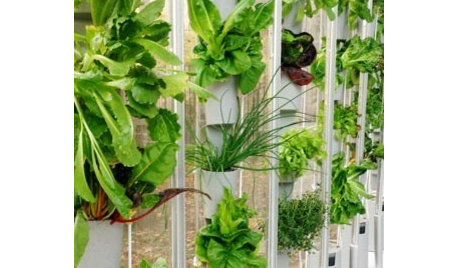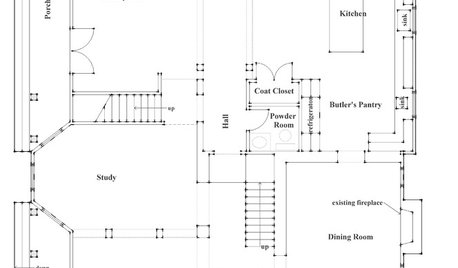SOFTWARE for planning and planting?
mensplace
14 years ago
Related Stories

DESIGN PRACTICEDesign Practice: How to Pick the Right Drawing Software
Learn about 2D and 3D drawing tools, including pros, cons and pricing — and what to do if you’re on the fence
Full Story
PRODUCT PICKSGuest Picks: High-Tech Plant Helpers
Hydroponics, monitoring systems, even an electric pollinator ... these gadgets and services keep your greenery growing strong
Full Story
REMODELING GUIDESHow to Read a Floor Plan
If a floor plan's myriad lines and arcs have you seeing spots, this easy-to-understand guide is right up your alley
Full Story
GARDENING GUIDESGreat Design Plant: Oakleaf Hydrangea
Consider this full, flowering shrub for year-round beauty in the garden as you plan your fall plantings
Full Story
NATIVE PLANTS5 Ways to Keep Your Native Plant Garden Looking Good All Year
It’s all about planning ahead, using sustainable practices and accepting plants as living organisms
Full Story
URBAN GARDENSPlant a Garden That Can Move With You
Think mobile when planning your outdoor space and you can enjoy it wherever you move next
Full Story
GARDENING GUIDESGreat Design Plant: Slipper Plant
Unthirsty succulent looks great all year and offers an unexpected surprise in fall
Full Story
GARDENING GUIDESWhat Are Your Spring Gardening Plans?
Tearing out the lawn? Planting edibles? Starting from scratch? Tell us what you plan to change in your garden this year
Full Story
GARDENING GUIDESHow to Plan Your Edible Garden
Get organized before you plant to ensure that your fruits and vegetables have a chance to thrive
Full Story
ARCHITECTUREOpen Plan Not Your Thing? Try ‘Broken Plan’
This modern spin on open-plan living offers greater privacy while retaining a sense of flow
Full Story






erin_nc
mensplaceOriginal Author
Related Professionals
Hyattsville Landscape Architects & Landscape Designers · Jennings Landscape Architects & Landscape Designers · Marco Island Landscape Architects & Landscape Designers · Buford Landscape Contractors · Annandale Landscape Contractors · Cordele Landscape Contractors · Lancaster Landscape Contractors · Lemont Landscape Contractors · Longmont Landscape Contractors · Milford Mill Landscape Contractors · Palm Beach Gardens Landscape Contractors · Shoreview Landscape Contractors · Thornton Landscape Contractors · Castro Valley Driveway Installation & Maintenance · Deer Park Driveway Installation & Maintenanceufseeds
vegnewsday
m_lorne
mensplaceOriginal Author
ten_steps_ahead
m_lorne
robertz6
mailman22
mmqchdygg
kasiaw